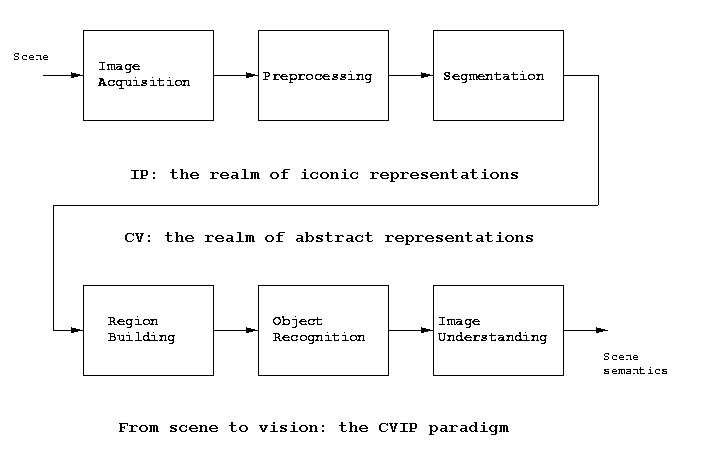
CSE473/573 Fall 2010 Lecture Charts
Organizational Meeting August 30, 2010
Walkthrough of semester's work:
Ch 1 (1): Brief intro
Ch 2 (2): Digital images
Ch 3 (4): Image data structures
Ch 4 (5): Preprocessing
Ch 5 (6): Segmentation
Ch 11 (13): Morphological operations IMidterm exam
Walkthrough of semester's work (cont'd):
Ch 11 (13): Morphological operations IICh 6 (8): 2D shape
Ch 7 (9): Object recognition
Ch 8 (10): Image understanding
Ch 9 (11): 3D visionFinal exam

Low-level steps in the CVIP paradigm are characterized by two things: iconic representations and little or no domain knowledge.
Low-level algorithms are rooted in signal processing and most will be familiar to computer or electrical engineers.
Low-level operations are mostly pre-cognitive or reactive (fixed stimulus-response relationship, no "thinking" or planning). Reactive operations are hard-wired.
High-level steps by contrast have abstract representations and require significant domain knowledge.
High-level algorithms are rooted in graph theory and artificial intelligence and most will be familiar to computer scientists.
High-level operations are cognitive rather than reactive.